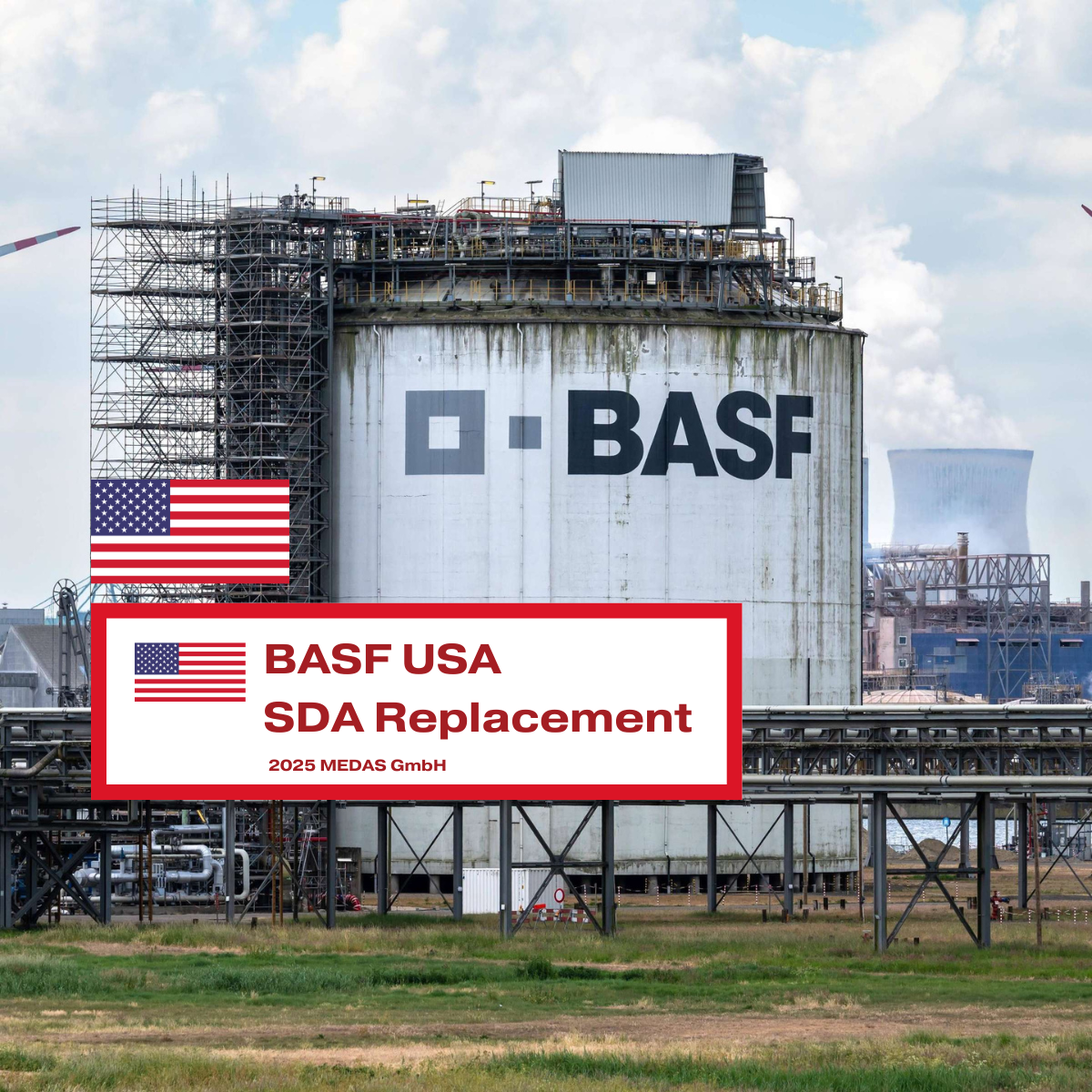BASF USA Modernizes SDA Units with Burgess Manning Silencers via MEDAS
BASF USA replaced legacy Spray Dryer Absorber (SDA) silencers with next-generation Burgess Manning SDA silencers, supplied and engineered via MEDAS and executed together with the Burgess Manning New York team. The project used 100% U.S.-sourced materials and fabrication to deliver lower noise, reduced pressure drop (ΔP), higher reliability, and faster lead times—all within planned outage windows.
 Why upgrade aging SDA silencers?
Why upgrade aging SDA silencers?
Noise creep & compliance risk: Degraded media and loosened baffles erode attenuation.
Rising ΔP & energy use: Fouling and collapsed internals increase fan load and cap throughput.
Fatigue & corrosion: Thermal cycling and condensate drive panel/weld failures.
Unplanned maintenance: Emergency repairs inflate OPEX and EHS exposure.
Outcome focus: Quieter operation, energy savings, stability across turnarounds, and measurable lifecycle cost reduction.
What’s improved in Burgess Manning SDA silencers
Tuned reactive-absorptive cores targeting tonal peaks from ID/FD fans.
Low-ΔP, high-open-area geometry to preserve airflow and reduce fan power.
Material options (e.g., 304/316L, duplex, coated carbon steel) matched to SDA chemistry.
Modular cartridges for rapid drop-in replacement and easy inspection.
Thermal & structural resilience for high-temperature excursions and vibration.
Executed with Burgess Manning New York — 100% U.S. sourcing
Single integrated team: MEDAS engineering + Burgess Manning New York application and fabrication support streamlined design decisions and QA.
Domestic supply chain: All major components, assemblies, and fasteners were sourced and manufactured in the U.S., enabling shorter lead times, simplified logistics, and consistent quality documentation.
Procurement advantages: Easier vendor audits, material traceability (MTRs), weld procedure records (WPS/PQR), and coating DFT reports consolidated under U.S. suppliers.
On-site efficiency: New York team supported lift plans, install supervision, leak checks, and commissioning SPL/ΔP baselining—keeping the outage critical path tight.
Result: A faster, predictable retrofit with robust U.S. quality standards and ready availability of spares.
MEDAS retrofit approach at BASF USA
On-site survey & baseline – duct geometry, fan curves, SPLs by band, ΔP, materials, and failure modes.
Acoustic & flow modeling – predicted attenuation (octave/⅓-octave), velocity profiles, and ΔP checks.
Design finalization – material/coating selection, flanges and supports matched to existing interfaces.
U.S. fabrication & QA – dimensional checks, MTRs, WPS/PQR, coating DFT, trial fits.
Planned-outage installation – modular swaps, bolting & gasketing, leak tests.
Commissioning & handover – post-install SPL/ΔP, as-built docs, spare cartridge plan.
Measurable gains
3–10 dB(A) typical overall noise reduction (site-specific).
5–20% lower ΔP than degraded internals → fan energy savings and airflow headroom.
Reliability ↑ via corrosion-resistant materials and rigidized modules.
Maintenance ↓ with cartridge inspections and predictable spares.
Note: Results vary by baseline condition, spectrum, and site constraints.
EHS & Compliance
Upgraded silencers support plant noise policies and community standards. Documented pre/post SPL and ΔP results create audit-ready evidence for internal EHS and stakeholder reporting.
Scope, schedule, and services
Scope: Supply of Burgess Manning SDA silencers, adapters, supports, gaskets/bolting; install supervision; commissioning support.
Schedule: Works aligned to BASF shutdown windows; modularization shortens the critical path.
Aftermarket: U.S. cartridge spares strategy, inspection templates, and training.
